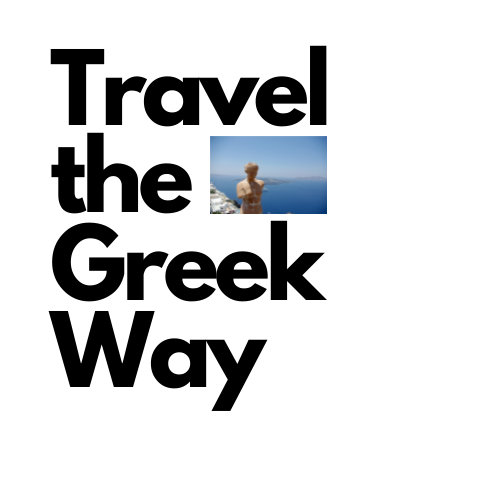Nemea Greece is a beautiful, fertile area in the Peloponnese, famous for the largest vineyards in the Balkans. It is one of the most popular areas in Greece to have high-quality wine tasting. According to Greek Mythology, ancient Nemea was also home to the legendary Nemean Lion, one of Heracles’ formidable foes.
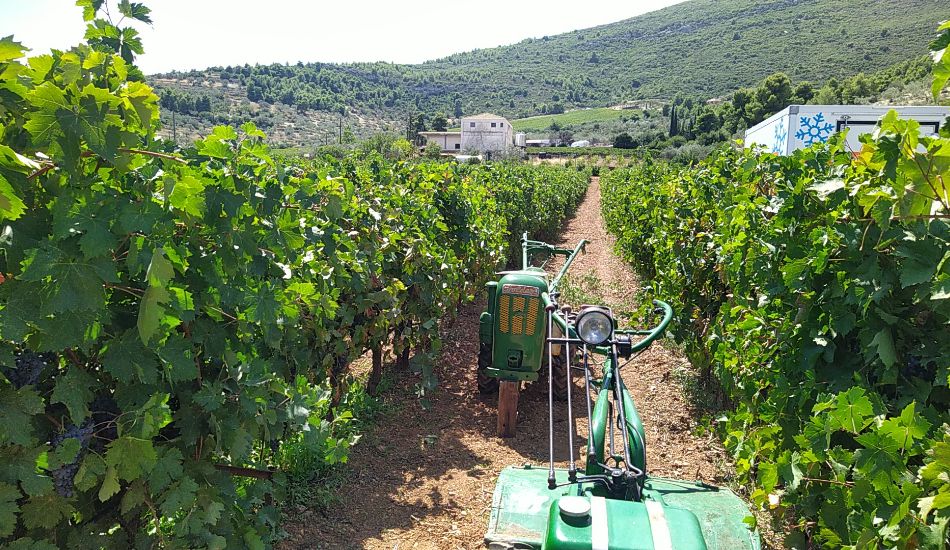
As it also houses the important archaeological site of the Sanctuary of Zeus and an ancient Greek Stadium, that means that there are plenty of things to do in Nemea. And if you love discovering exciting places, then Nemea will surprise you with a rock-built monastery, the ancient quarry of Kleones, the Mycenean necropolis, and the local traditional cuisine.
*Some of the links in this post are affiliate links. That means I may make a commission if you click and buy. The commission comes at no additional cost to you.
Top Things to Do in Nemea Greece
We’ll take a look at the 10 best Nemea Greece attractions. As it is located near the ancient city of Kleones and amid the fertile hills of the area, there is plenty to do: From the beautiful Temple of Zeus and the ancient Stadium of Nemean Games to local red wine and food tasting, these are the best things to do in Nemea.
Let’s dive straight in!
1. Nemea Archaeological Site
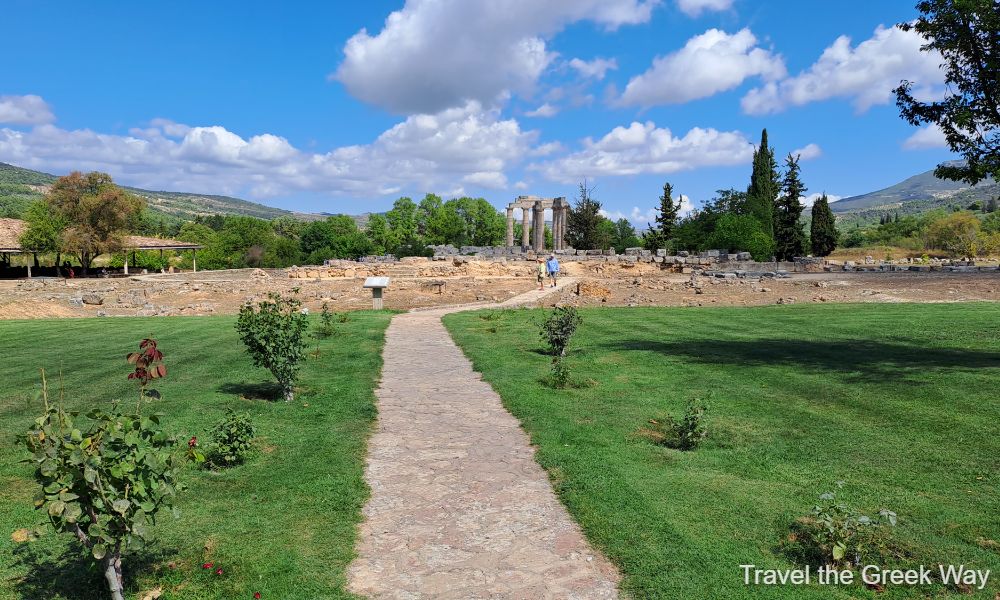
The archaeological site of Nemea used to be part of the territory of Kleones in ancient Argolis, but today it belongs to the regional unit of Corinthia. The site is dominated by the Temple of Nemeios Zeus, dedicated to the king of Greek ancient gods.
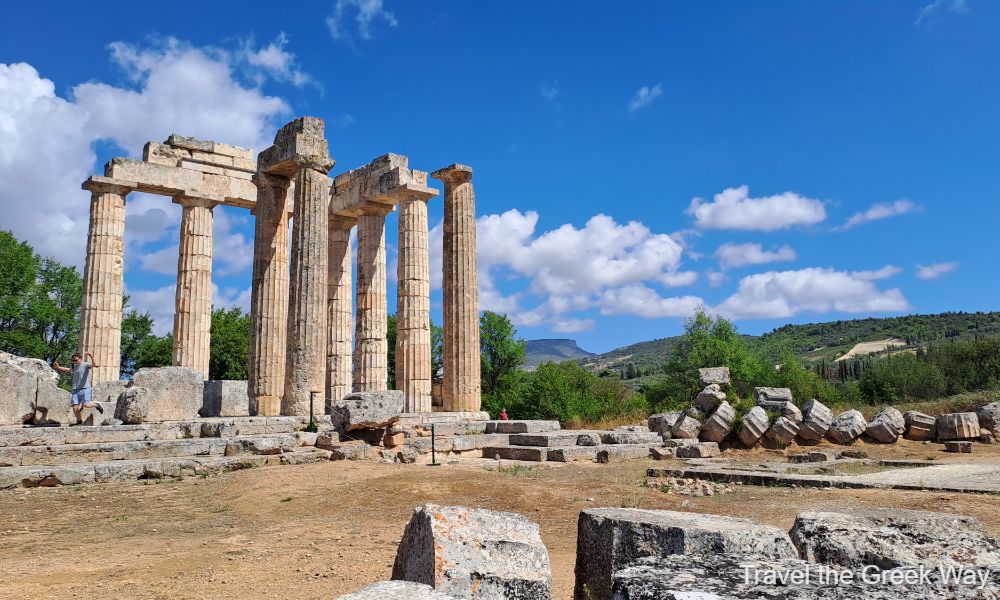
The Temple of Zeus was built circa 330 BCE and was made mostly with limestone. It is unique as it contains elements of all three architectural styles of Greek antiquity: Doric, Ionic, and Corinthian.
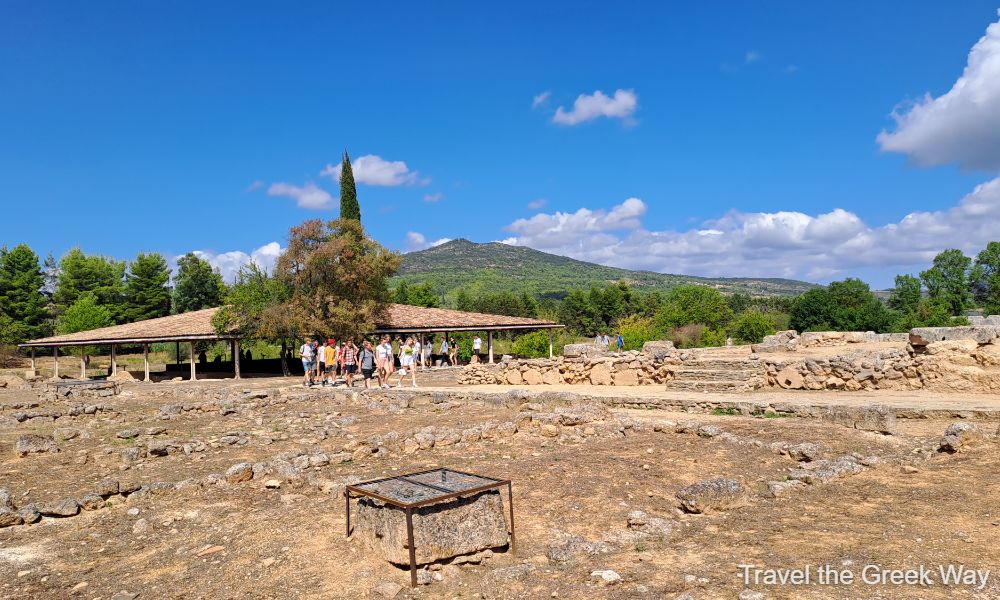
The Sanctuary of Zeus in Nemea, which is a beautifully attended green area with lots of flowers, also contains ruins of bath facilities, the foundations of a large hostel, and the Shrine of Opheltes.
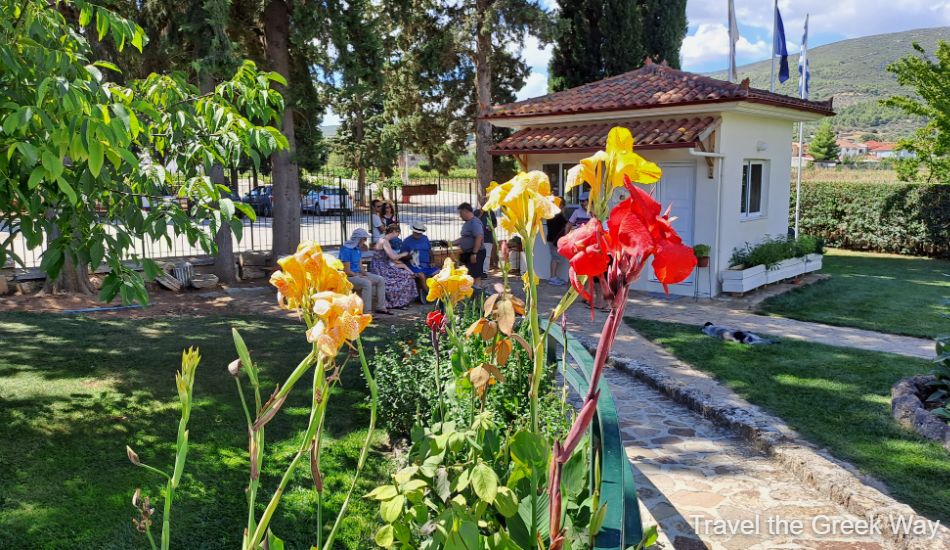
Finally, at the entrance you will see a small but significant museum, and 300 meters from the site, lies the ancient stadium of the Nemean Games.
What were the Nemean Games?
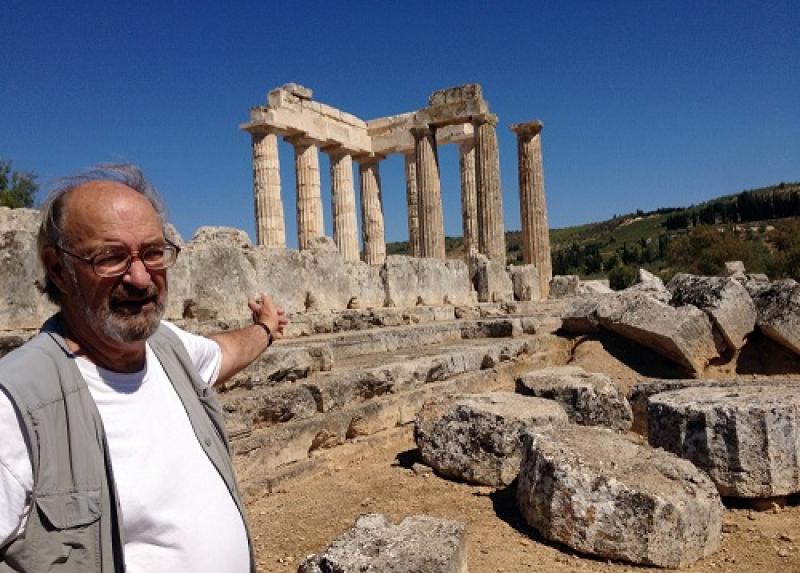
Nemea owes to great Phillhelene Stephen G. Miller not only the discovery and excavation of the Stadium and the revival of the Nemean Games but also the reconstruction of the Temple of Zeus. The next Modern Nemean Games (8th Nemead) will be held on 8-10 June 2024, see here for details.
Late Stephen G. Miller (1942-2021) was a professor of Classical Archaeology at Berkeley, took Greek citizenship, built his house in Nemea, and died in Greece, which he loved immensely.
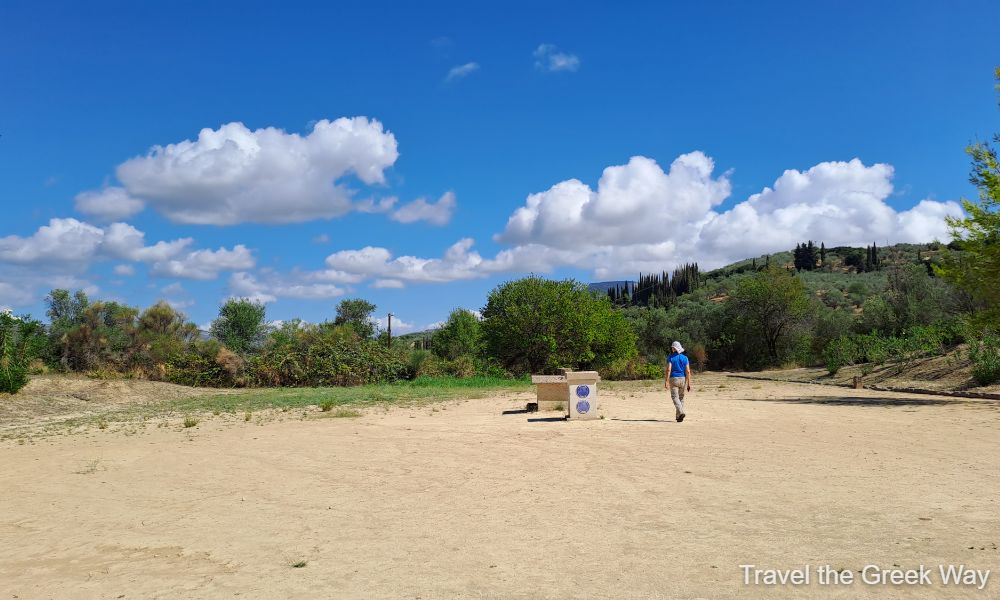
The ancient Nemean Games were one of the five major Panhellenic Games of ancient Greece along with the Olympic, Pythian (in Delphi), Basileia in Livadia, and Isthmian Games (in Isthmia near Corinth). They started in 573 BCE and were held every two years in July.
The Nemean Games (Nemead) featured various athletic (and musical) competitions, including foot races, boxing, wrestling, and the pentathlon. The winners were awarded a wreath made of wild celery and were considered to be heroes in ancient Greece.
Greek Mythology of Nemean Games
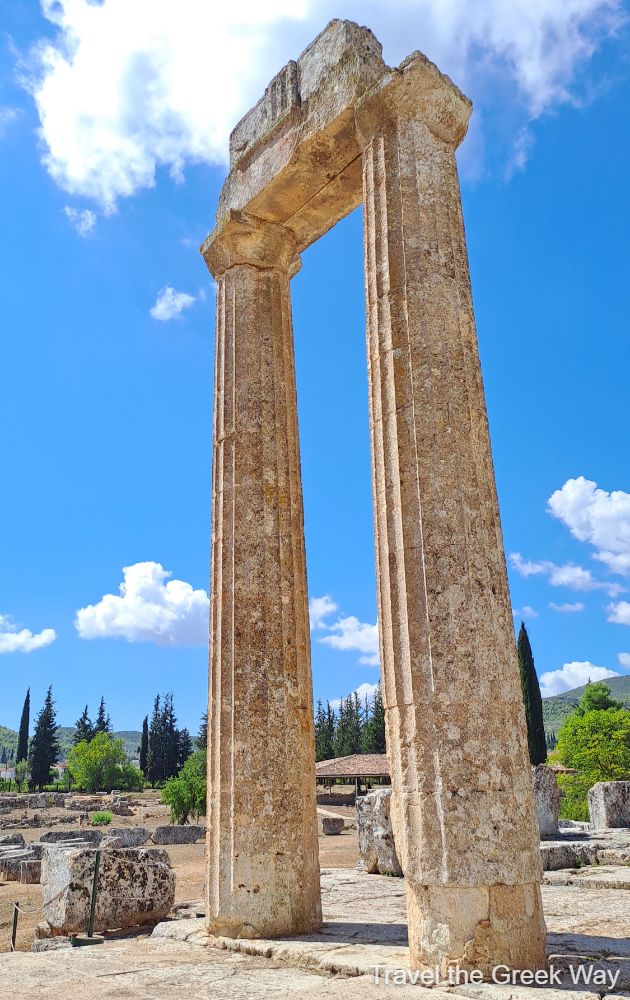
According to the myths, in Nemea both Zeus and the infant hero Opheltes were worshipped. Opheltes was the son of Lycurgus, king of Nemea, and Eurydice. One day, the baby’s nurse, Hyssypyle, met the Seven Argive Kings who were on their way to Thebes and asked her to point out a source of water.
Hyssypyle laid Opheltes on the grass but a snake bit him and the infant died. In honor of Opheltes, the Seven on Thebes instituted the Nemean Games.
2. In-site Museum of Nemea Greece
The in-site museum is a modest building of 4 rooms containing exhibits from the Neolithic, to the Classic till the Paleochristiniac years of Nemea. It is well-organized and the displays are explained in both Greek and English.
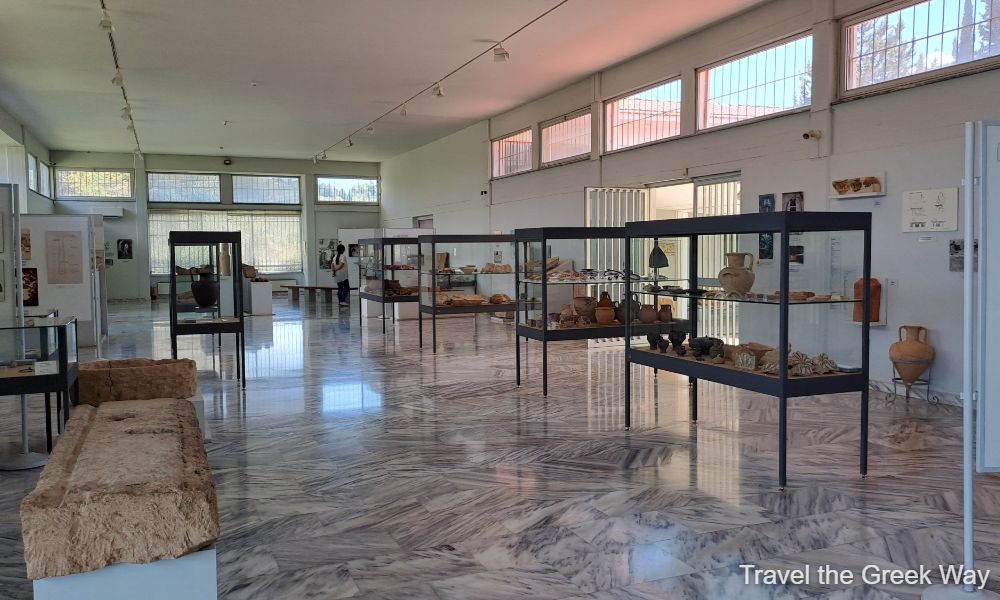
Some of the most interesting exhibits are rare coins, helmets, and tributes of athletes to Zeus with accessories of their sport. If you like architecture, there are also pieces of the hydraulic system of the Roman era of the town.
3. Ancient Greek Stadium of Nemea
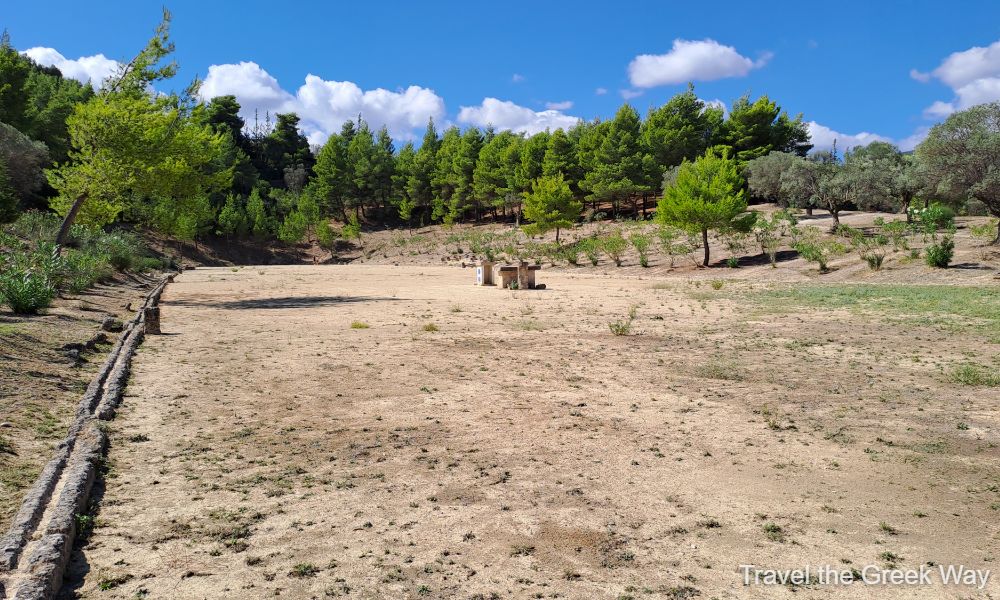
The stadium, built in 320 BCE, is approximately 180 meters long and could accommodate up to 40,000 spectators. The starting line and finish line of the stadium are still visible today, as well as the stone seating areas for the spectators.
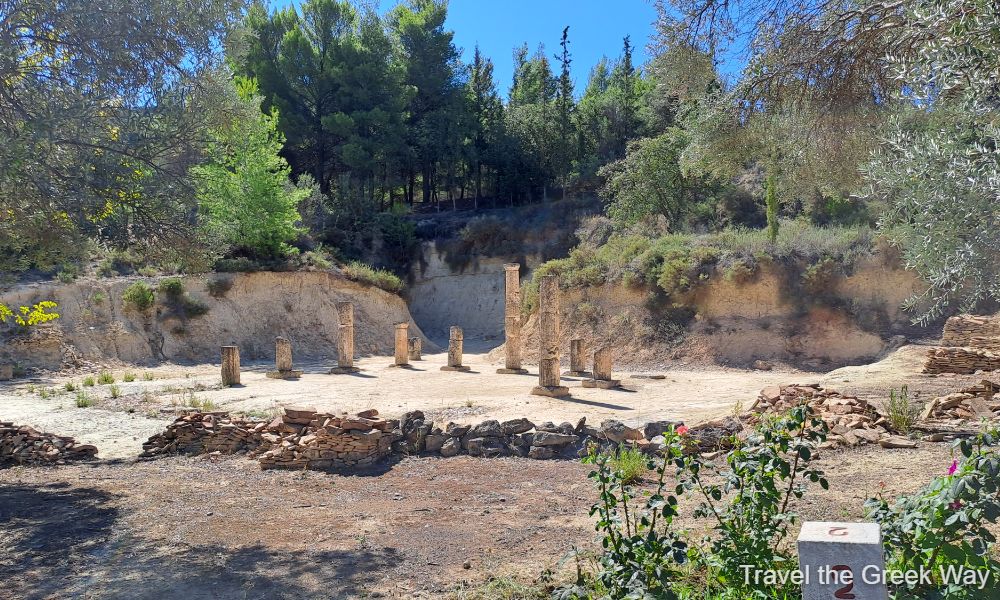
As you enter the area of the stadium of Nemea, on your right hand you will find the apodyterion. This is the room place where the athletes changed clothes and rubbed their bodies with olive oil before entering the stadium.
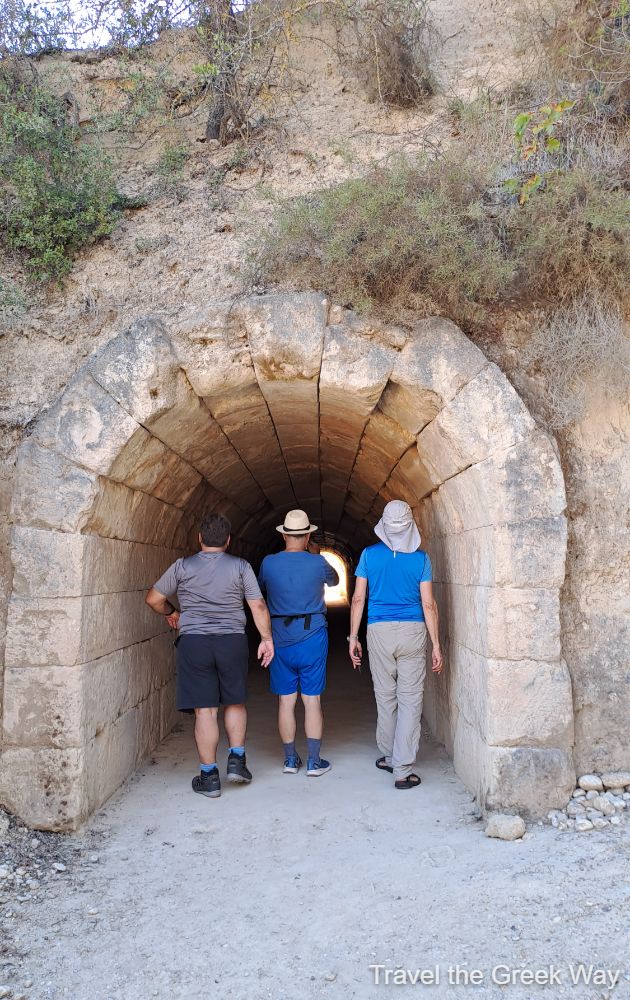
The athletes would next proceed to the well-preserved vaulted entrance tunnel that is 36 meters long. It is dated to about 320 BCE, with ancient graffiti on the walls. The name “Telestas”, who is a known ancient Olympic victor, was carved into the walls and is still visible today.
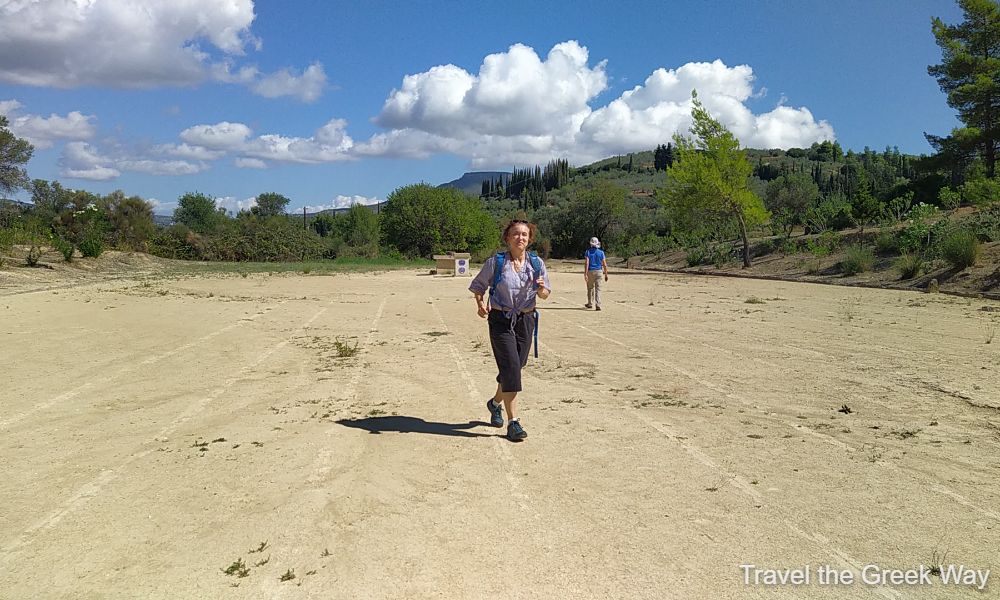
All Greeks gathered for the celebration, and there was established a sacred truce to suspend all wars and hostilities so everyone could come to see the Games. However, with the transfer of the games to the city of Argos in 271 BCE, came the decline of the sanctuary of Zeus in Nemea.
When Pausanias visited the Sanctuary circa 150 CE, he found the Temple abandoned and in ruins.
Entrance Fee to the site and Stadium is €6 full season (open from 8.00 am to sunset) and €3 low season, open between 8.00 to 15.00.
4. Nemea Wineries and Wine Tasting
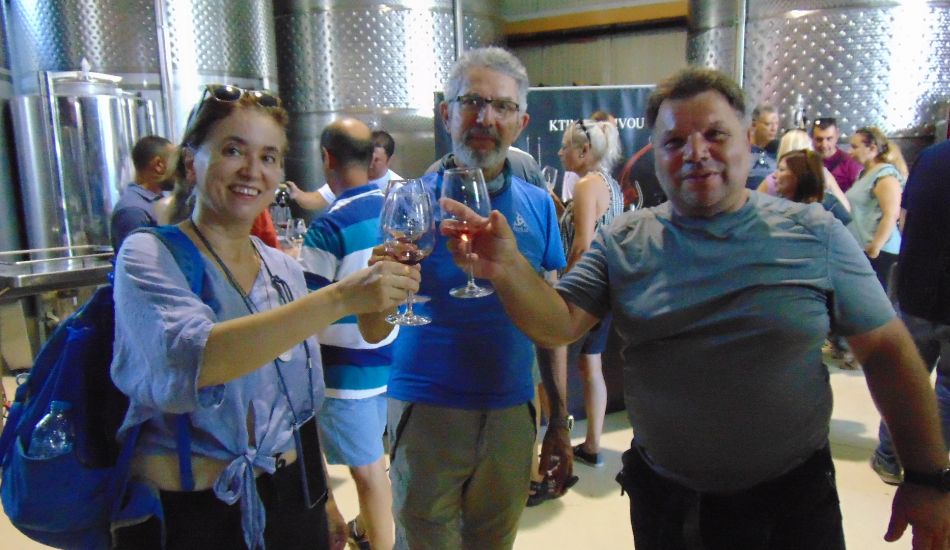
The vineyards in the whole region are simply endless and wine tasting is one of the best things to do in Nemea. Wherever you turn your eye you see fields with grapes and low hills covered by vineyards. The most famous wine you will taste here is the indigenous Greek red Agiorgitiko variety. It produces wines famous for their deep red color and complex fruity aroma.
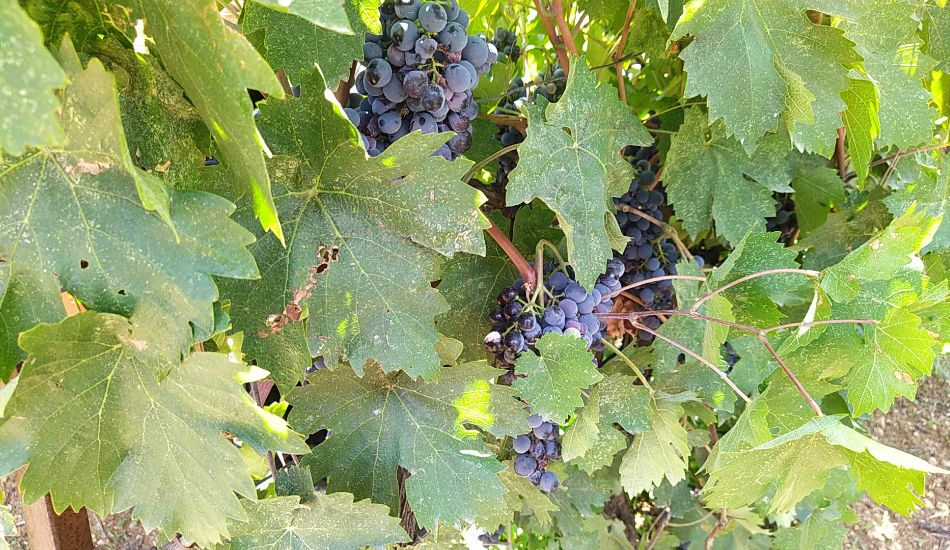
Nemea is one of the 34 Protected Designation of Origin (PDO) locations in Greece. It houses about 30 wineries and produces 30% of the total wine production in Greece.
If you would like to have a wine-tasting experience in Nemea, I highly recommend the Wine Trails Private Tour. Or the Ancient Corinth & Nemea Wine Tasting if you prefer to combine it with another famous ancient site.
5. Mycenean Cemetery of Aidonia
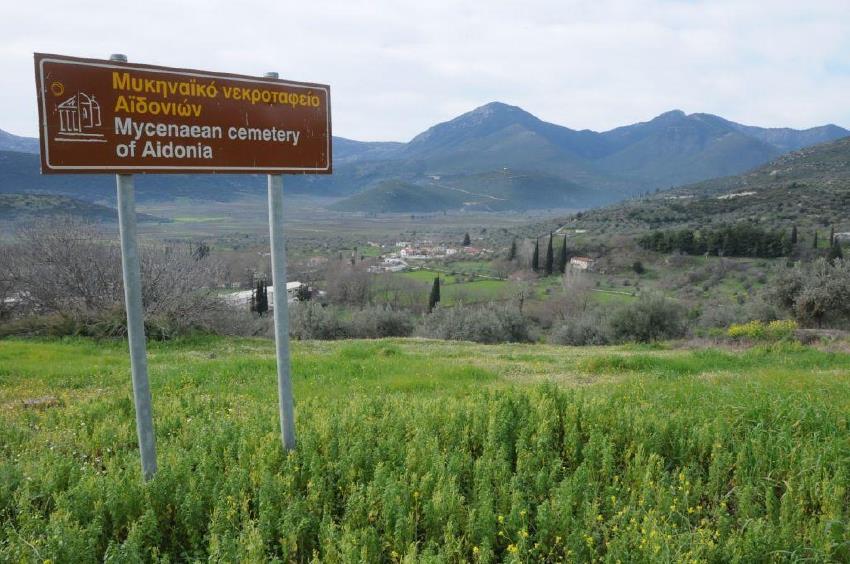
8.5 km northwest of Nemea lies the important Mycenaean Cemetery of Aidonia. The excavations in the 70s revealed the impressive chambered tombs carved inside the rocks which contained numerous valuable ancient objects.
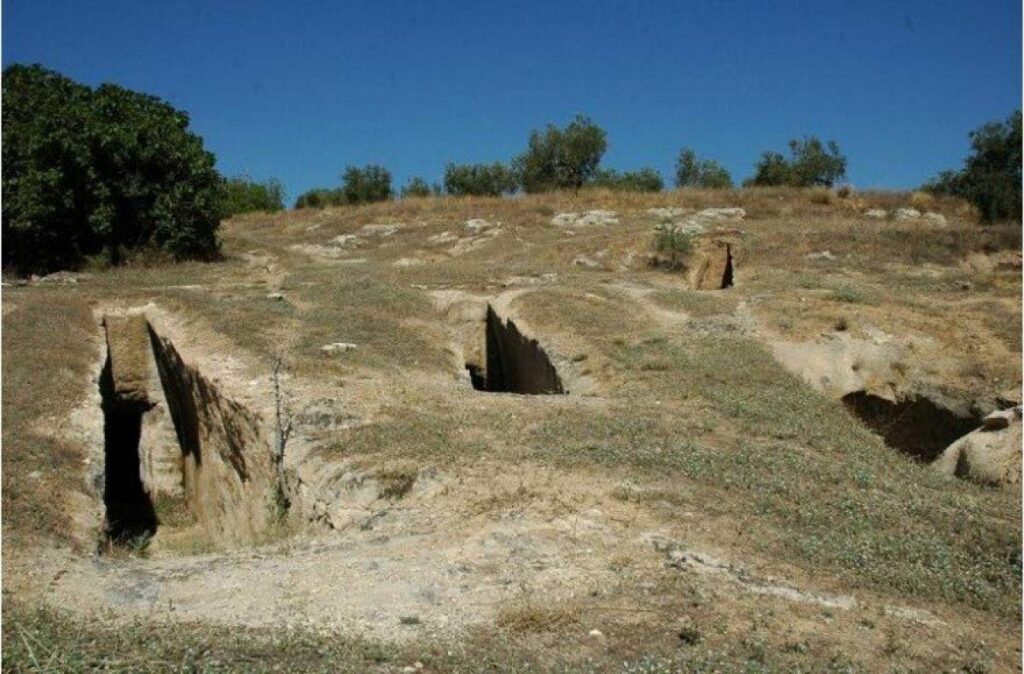
Unfortunately, the objects were soon after stolen but were discovered in 1993, in an auction catalog at the Michael Ward Art Gallery in New York, by the philhellene Malcolm Winner. He immediately notified the Greek authorities who appealed to the Federal Court of New York, the auction was canceled and the “Aidonia Treasure” was returned to Greece.
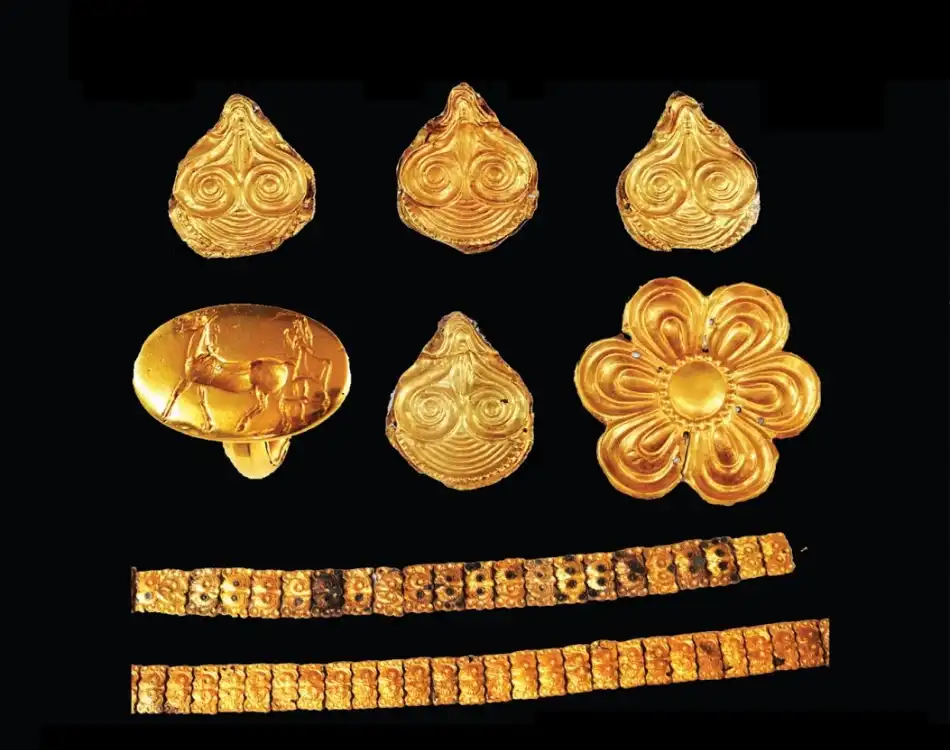
It is a unique archaeological set of 312 pieces dating back to 1500 BC (gold rings, seals, seal stones made of steatite, etc) which is now on display at the Archaeological Museum of Nemea.
History Tip: Mycenean civilization was during the last Bronze Age period in Greece. The most important Mycenean cities were Mycenae, Pylos, Thebes, Iolkos, Argos, and Orchomenos.
6. Food Tasting at Local Taverns
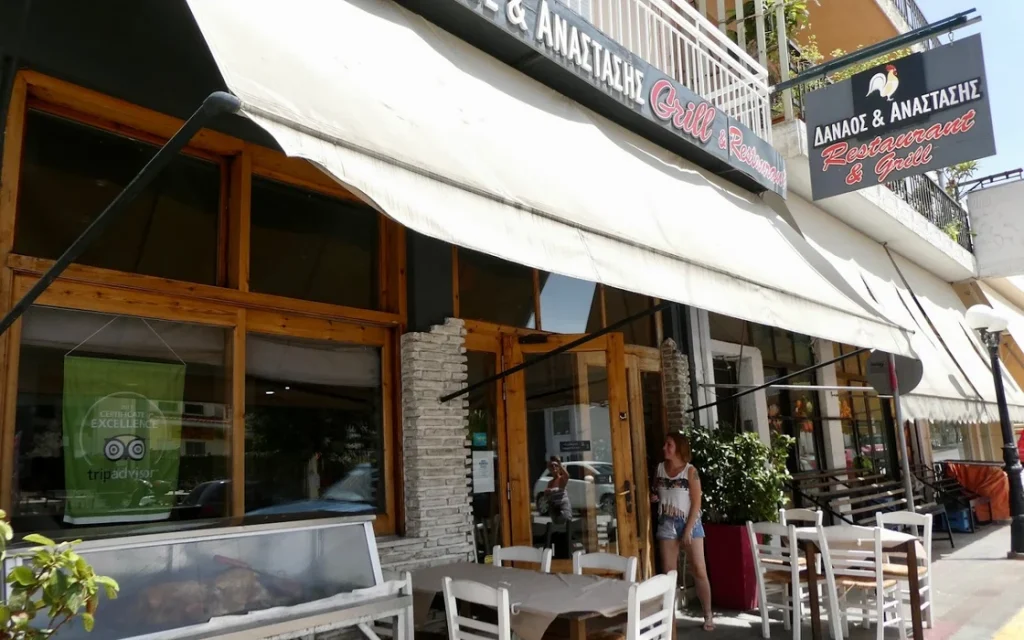
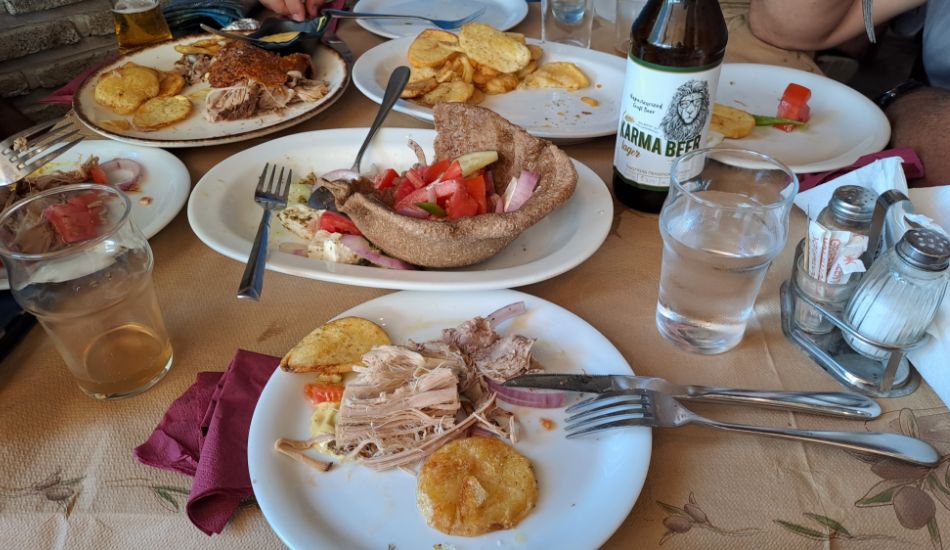
If you run in the stadium then you will probably get hungry! For the best local food, I suggest you drive to modern Nemea and discover the local cuisine. There are only a few taverns available but we made a stop at Danaos & Anastasis tavern with absolutely delicious food and the friendliest service.
Other great taverns you can visit in Nemea are Kalokerini -Taverna, Sofos, and 17 Choria.
7. Hercules and the Lion of Nemea
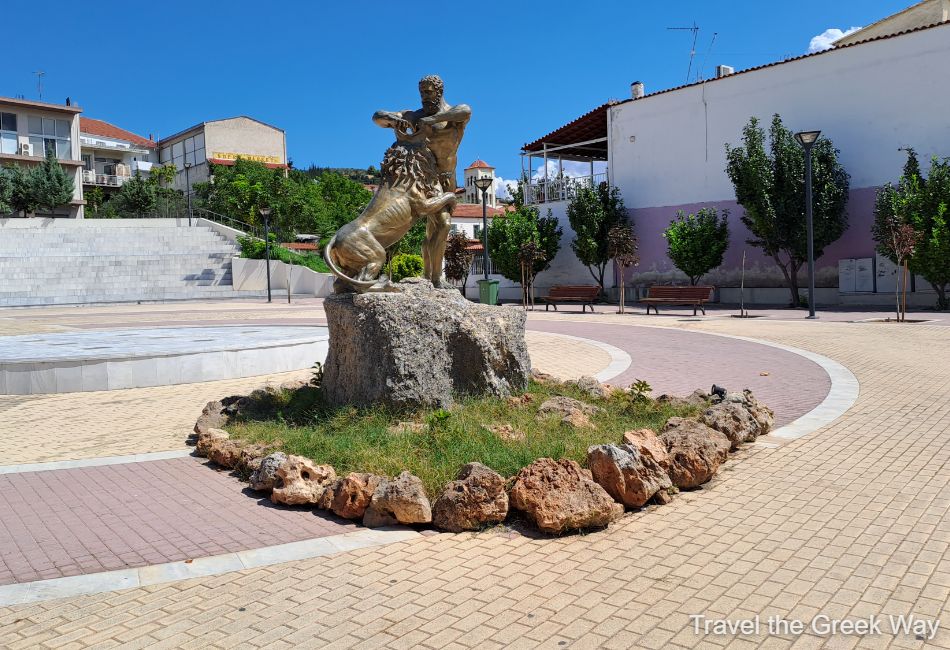
According to Greek Mythology, Heracles was driven insane by the goddess Hera, and in one of his fits, he killed his wife Megara and children. He then went to Delphi Oracle who told him that to atone for his sins he needed to serve under King Eurystheus in Tiryns for 12 years (Tiryns was a Mycenean Kingdom near Nafplion).
‘Eurystheus decided that Hercules’ first task should be to bring him the skin of a lion that was terrorizing the hills around Nemea at the time.
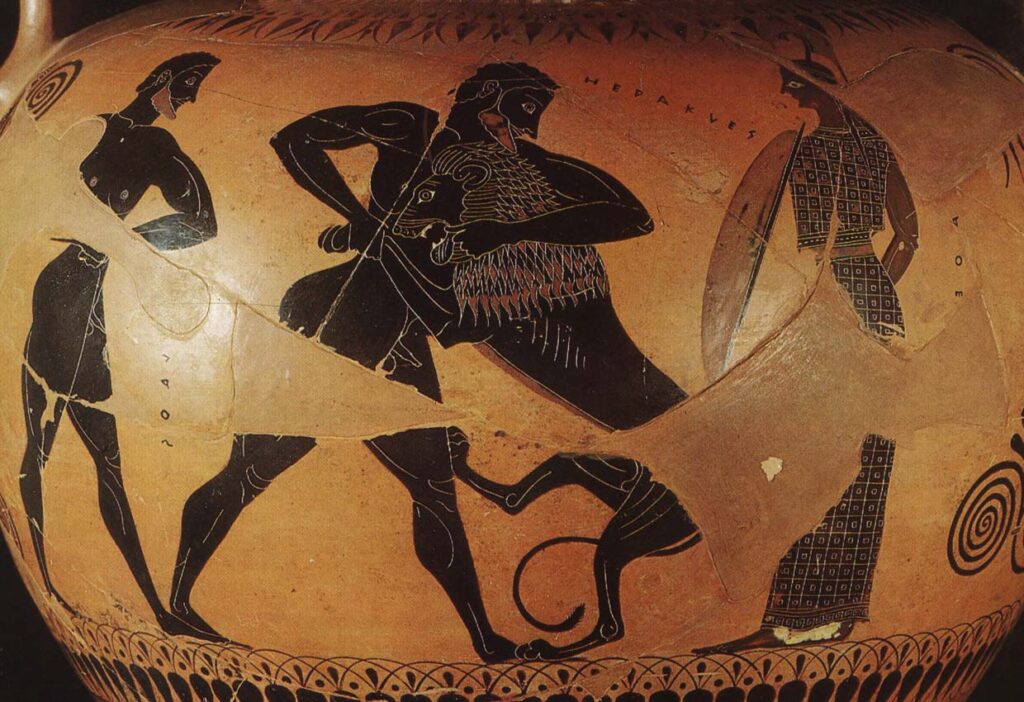
When Herakles got to Nemea and began tracking the terrible lion, he soon discovered his arrows were useless against the beast. Herakles picked up his club and went after the lion.
Following it to a cave that had two entrances, Herakles blocked one of the doorways and then approached the fierce lion through the other. Grasping the lion in his mighty arms, and ignoring its powerful claws, he held it tightly until he’d choked it to death.
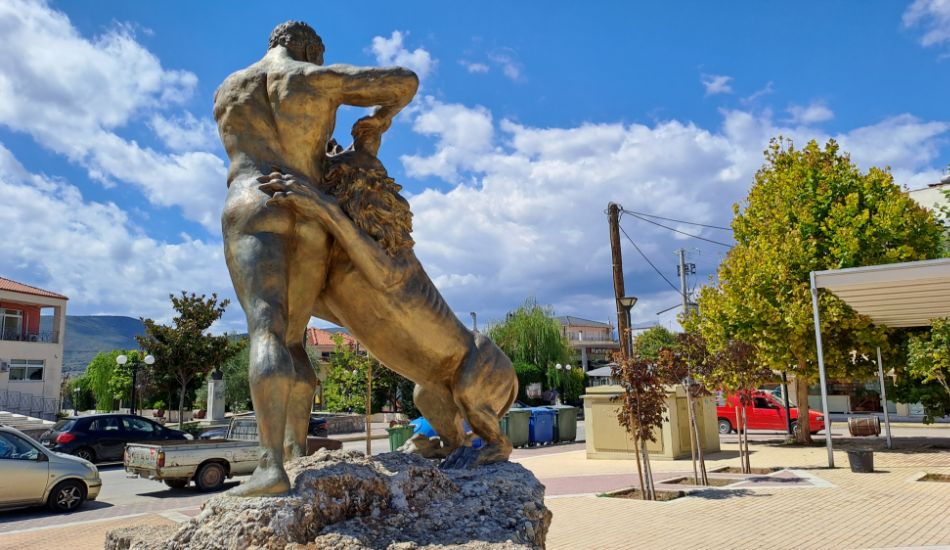
From that point on, Herakles wore the lion’s skin as his armor’ (Source https://nemeacenter.berkeley.edu/mythology).
You can visit the modern statue of Hercules and the Lion at the main square of modern Nemea, 5.4 km west of ancient Nemea.
8. Panagia (Holy Mother) of the Rocks
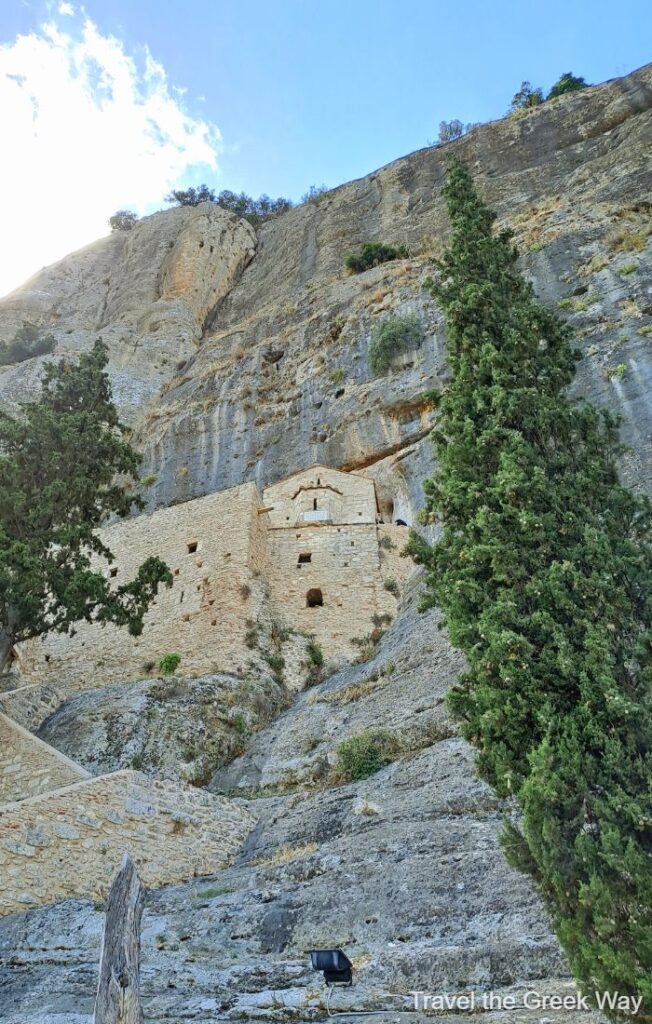
1 km southwest of the modern Nemea, pinned inside the Polyfeggous rock mountain, you will find Panagia of the rocks. These are ruins of an old church built literally inside the cave which was part of a larger medieval village.
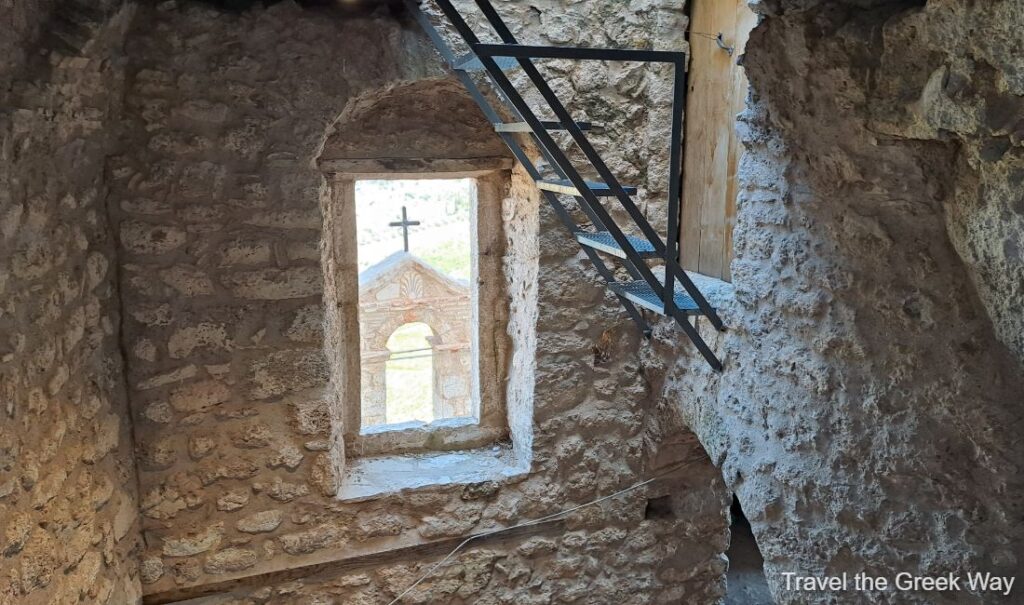
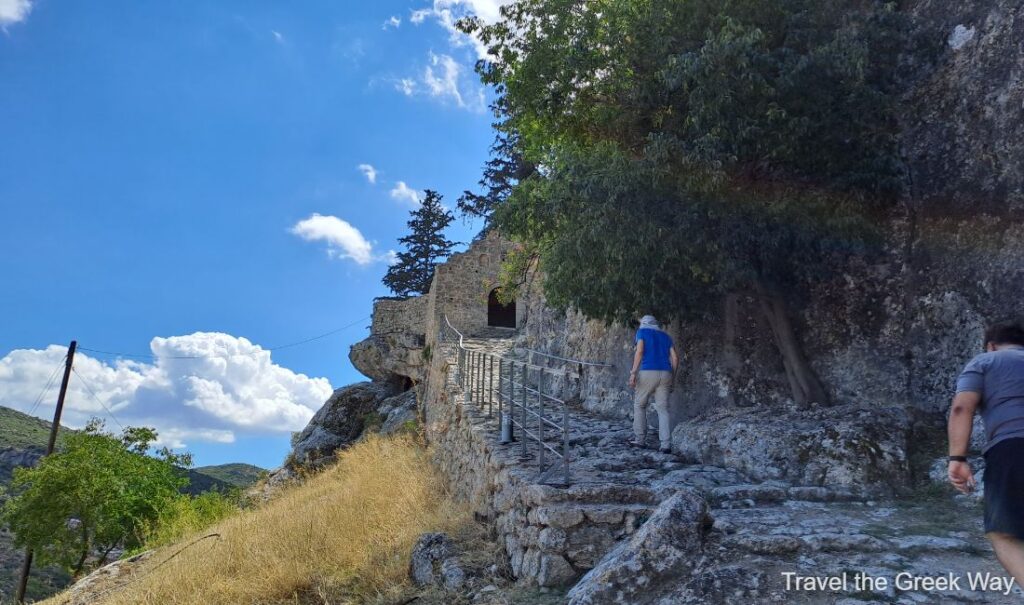
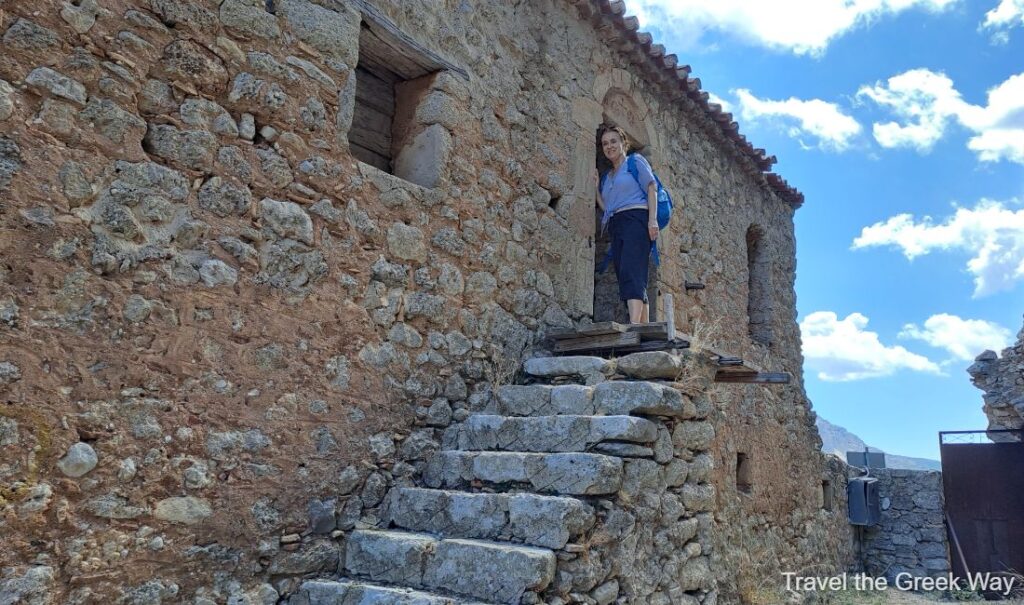
On the rocky wall of the ruined church, frescoes of excellent art are preserved to this day, which are considered to be from the 11th or 12th century. You will be impressed by the stone-built, arched entrance, the narrow courtyard, the caves, and the vault with decorative designs of Byzantine style.
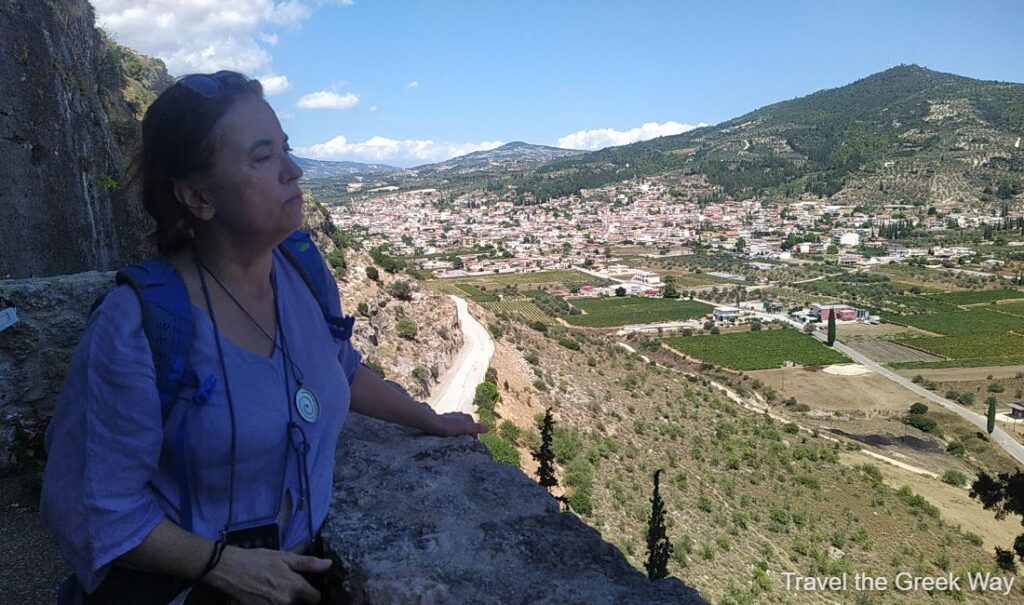
And my favorite spot in this impressive monument is the terrace where you can admire the plains and vineyards of Nemea.
Entrance is free and there is a dedicated area where you can park your car in front of the gates.
9. UNESCO Mycenae
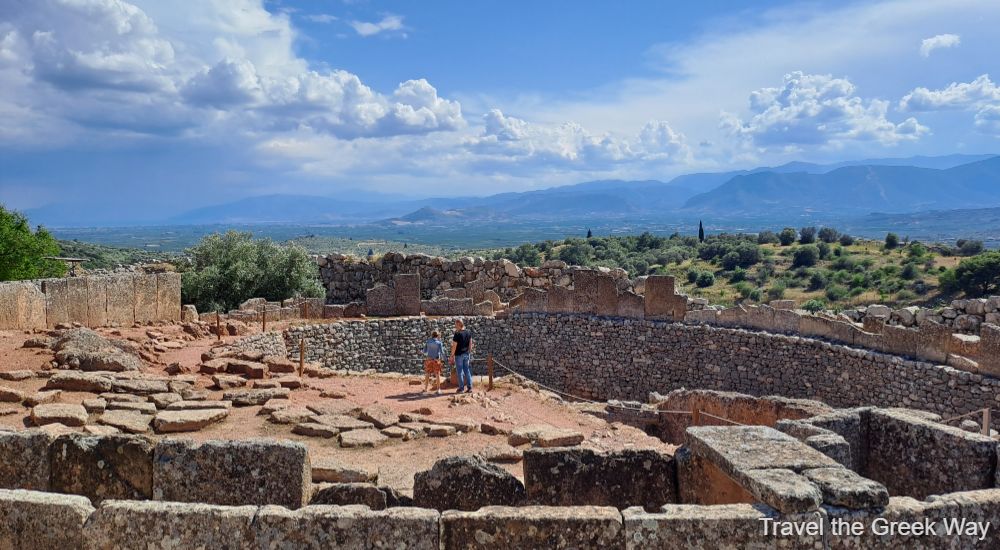
23 km south of Nemea, lies Mycenae, a UNESCO-listed monument. Mycenae was the kingdom of the mythical Agamemnon, the leader of the Greeks against Troy as it has been described by Homer and his epic poems of the Iliad and Odyssey.
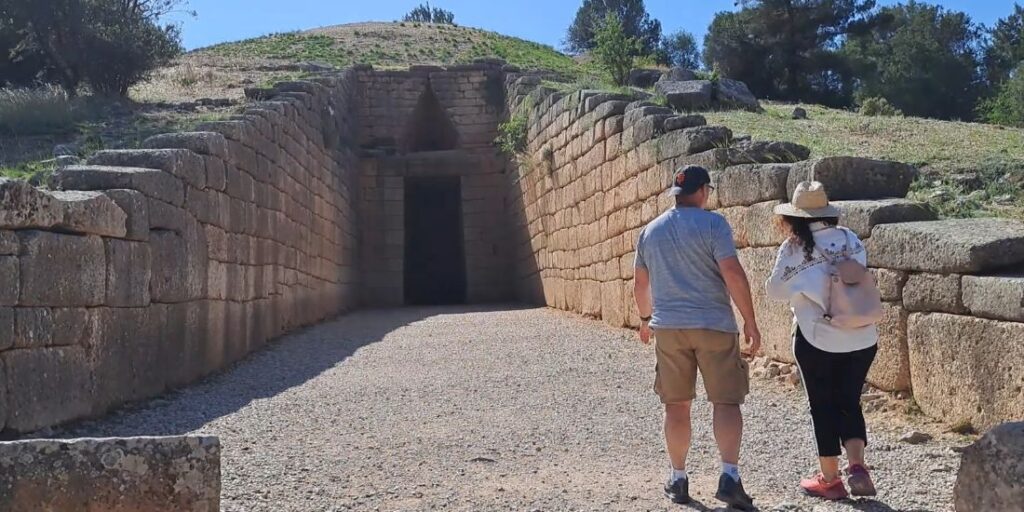
If you love archaeology and ancient ruins, this is a site that you shouldn’t miss. Mycenae, built c. 1350 BC, has two separate parts that you have to visit which are included in the same ticket:
- the famous Tholos tomb, known as the ‘Treasure of Atreus’, with its gigantic lintels and tall beehive vault
- The Lion Gate, the citadel’s monumental entrance, the ruins of the Palace, and the museum
You can grab your entrance ticket here in advance or you can opt for a full-day guided trip to Mycenae and Epidaurus here.
10. Nafplion Medieval Town
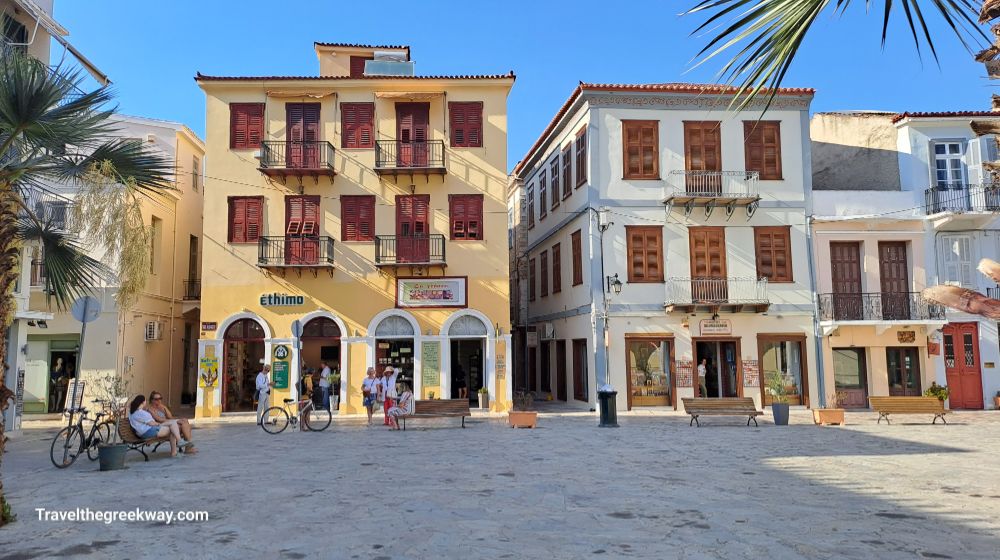
Visiting Nafplion is one of the best things to do in Greece. Nafplion is a stunning medieval town, 39 km south of Nemea, and is characterized as the most romantic town in the country. The town sits on the shores of the Aegean Sea and is filled with iconic landmarks and buildings in a maze of alleys.
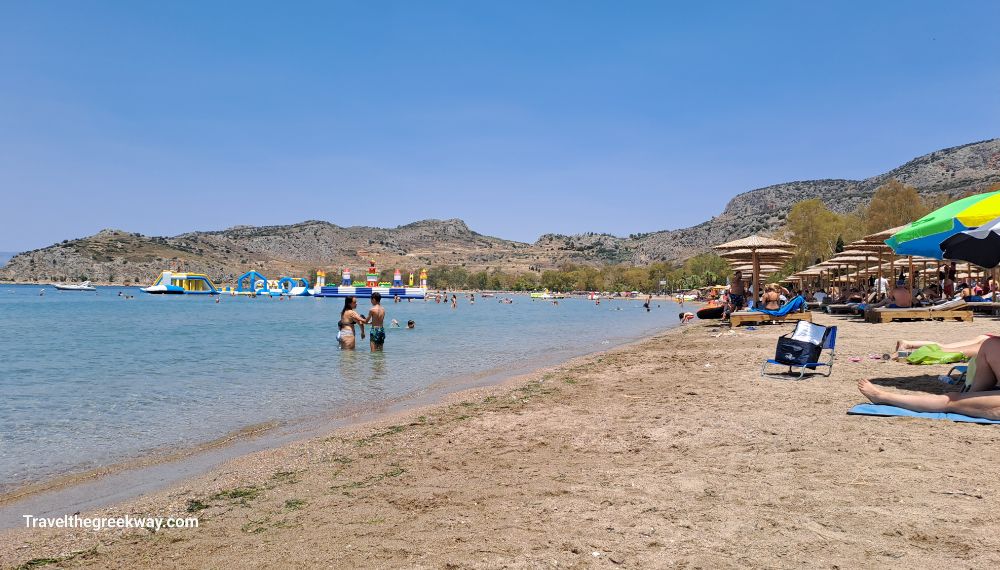
Visit the castles that sit over the town or put on your swimming suit and dive into the warm and clear waters of the seaside Nafplion. The choice is endless in this beautiful town.
Looking for somewhere to stay in Nafplion? Discover here the best hotels in Nafplion!
Visit Nemea Greece: FAQs
Now that we’ve covered the best things to do in Nemea, let’s look at some essential FAQs. These crucial snippets of information will help you finalize your trip to Nemea Greece.
How to Get to Nemea Greece
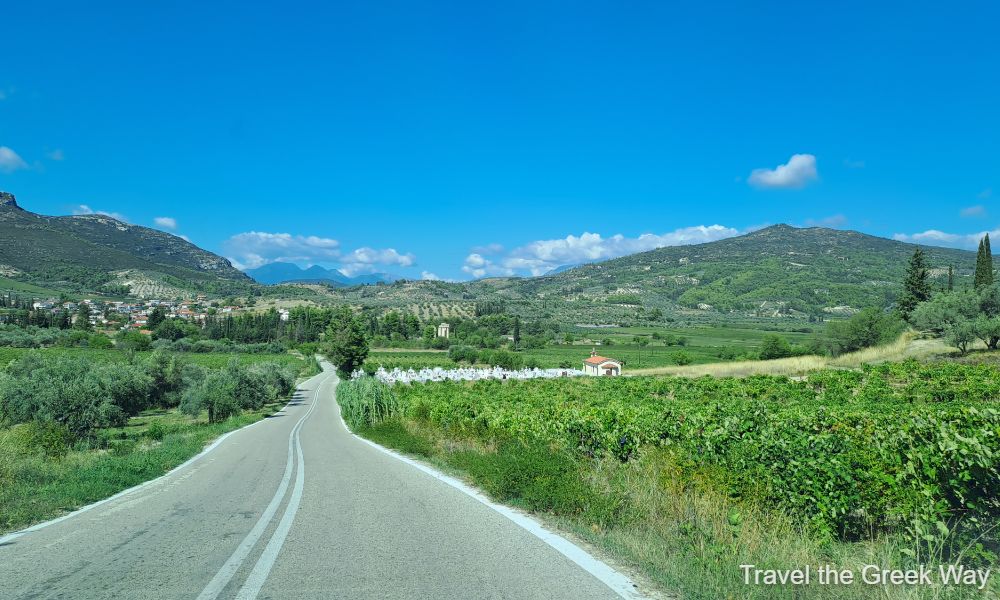
Nemea is 104 km southwest of Athens and is very easy to get there via the National Road E94. If you rent a car, which I suggest you do, using Discover Cars, you can stop along the way to other popular destinations in the area such as :
- Corinth Canal
- Ancient Corinth and Acrocorinth
- Isthmia Archaeological site
If you don’t want to drive, take the KTEL buses from Athens.
Tips for Visiting Ancient Nemea Site
Is Ancient Nemea Accessible?
Yes, it is. There is flat access around the monuments.
Is there a WC inside Ancient Nemea?
Yes, there is, free of charge, in the area of the tickets
Is there a shop inside the Museum?
No, there isn’t
How much time do I need for Ancient Nemea?
Generally speaking, you should plan to spend at least an hour for both the Sanctuary of Zeus and the Ancient Stadium
Can I drink or eat inside the Site?
You are not allowed to eat or drink inside any archaeological site in Greece, only water is allowed to carry around. There is no café/restaurant inside the site in Nemea.
Do I need cash or do they take credit cards?
You can pay either with cash or with a credit card at the entrance of the site.
Best Time to Go to Nemea Greece
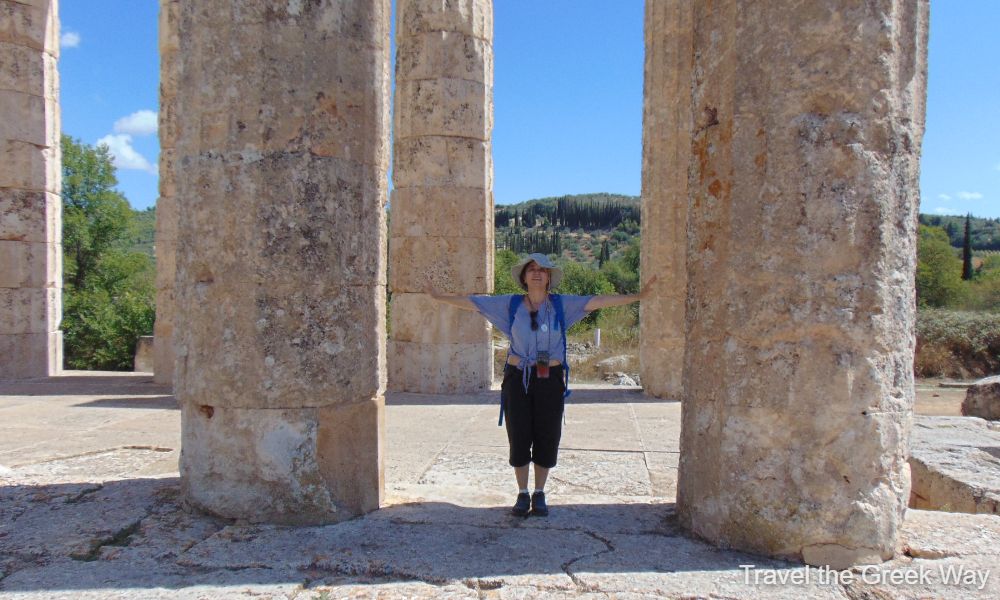
Nemea is an all-year-round destination. The wineries are always open, as long as you have booked your tour and so are the monuments and sites.
Nemea is so close to Athens and is easily combined with other sites making it an ideal day trip from Athens.
Plan My Trip
Do you need a custom travel itinerary or a transfer within Greece? Are you traveling solo, with your family or friends and need a tailor-made multi-day tour or a transfer?
If yes, please visit my dedicated Plan My Trip Page for a free itinerary!
Peloponnese Articles
Looking for more inspiration about visiting Greece? Check out our guides:
- Wine Tasting in Nemea
- Discover Ancient Corinth and Acrocorinth
- 4 Days Peloponnese: Mycenae, Nafplio, Olympia
- 8 Days Peloponnese: Nafplio, Kardamili, Monemvasia
- Top Things to Do in Porto Heli
How to Get to Athens Port (Piraeus) from Athens Airport
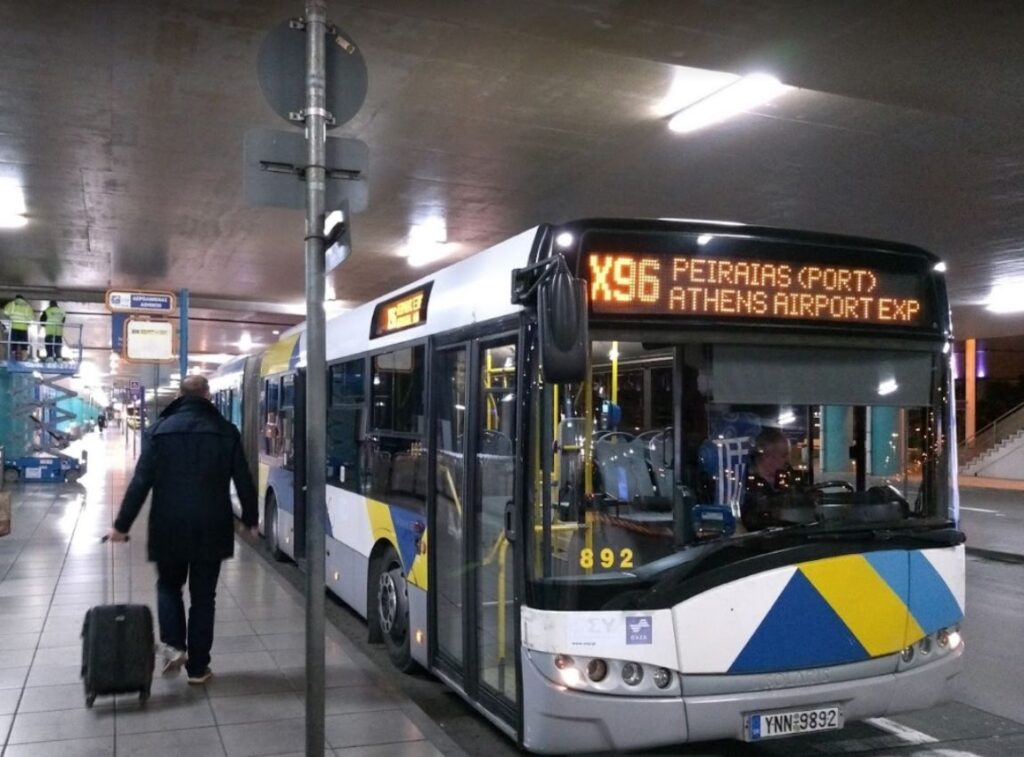
- Bus: If you are arriving at Athens International Airport you can travel straight to the port by taking the X96 express bus (€5.5, children <6 yo, free entrance), which departs every 40 minutes and the average trip lasts 1 hour – runs 24/7.
- Metro: (€9) is easily found across airport arrivals (blue line – M3) going directly to Piraeus port. The average trip to Piraeus lasts 1 hour.
- Taxis are available in front of the airport (around €40 to Athens, €55-60 to Piraeus (depending on the traffic in Kifisos), and take up to 3 or 4 people with small luggage)
- Rent a car with Discover Cars for reliable, new cars at affordable prices
- You don’t like driving but love hassle-free solutions? Book a Private transfer with an English-speaking driver from Athens International Airport to Piraeus Ferries, or anywhere else in Greece
- Are you looking for domestic flights in Greece? Check out the official Aegean Airlines Website.
Essential Travel info for Greece
- ‘Hello’ and ‘Thank You’ in Greek: “Ya sou” and “Efharisto”
- Booking.com: I use Booking.com mostly for Europe. It has over 1 Million properties to choose from, including everything from hotels to apartments and even hostels. And free cancellation!
- Expedia: I use Expedia for the best hotel descriptions and amenities and a rewards points system for the rest of the world.
- All-Inclusive Resorts in Greece
- FerryScanner to book ferries to the Greek Islands
- Rent an Affordable Car in Greece
- Athens Metro Website (timetables and ticket info)
- Map of Athens Metro
- Trains (Hellenic Train)
- Public Buses KTEL
- Get Your Guide: For all your day or multi-day tours and city guide needs, I use Get Your Guide
- Emergency Numbers Anywhere in Greece: AMBULANCE 166 – FIRE 199 – POLICE 100– EMERGENCY NUMBER 112
